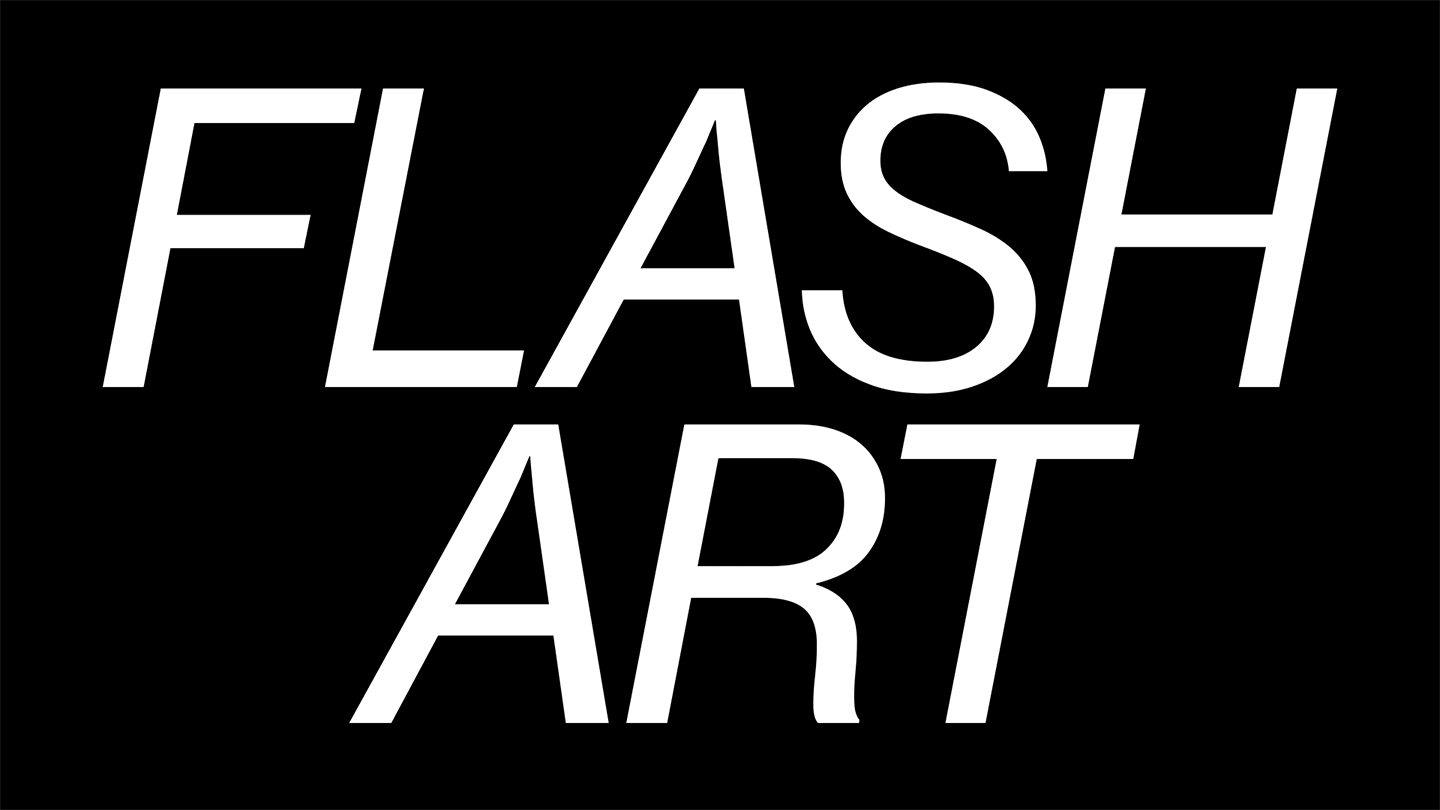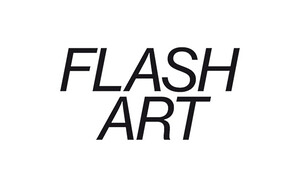March–April 2018
Asad Raza, Margaret Honda, Juan Antonio Olivares, Adrian Piper, Josh Tonsfeldt, Anna Uddenberg, Michael E. Smith
This issue of Flash Art introduces a new graphic identity. Developed with Wrong Studio in Copenhagen, the new design reinvigorates the magazine’s more than five-decade-long commitment to exploring, alongside our readers, the ever-changing landscape of contemporary visual culture. Our new logo, sleek and forward-looking, is a reinterpretation of our iconic sans-serif masthead of the 1970s. The inside pages preserve the neatly organized approach to content that distinguished the magazine’s previous design, while pursuing a less orthodox treatment of imagery: works of art and their critical readings are more freely entangled, in the service of a dynamic layout that remains manifestly legible. A more engaging table of contents; a continued diversification of discursive formats; longer exhibition reviews; and specially commissioned visual projects all contribute to a new look and feel for this flagship publication of one of the leading voices in art journalism.
On the occasion of the artist’s upcoming retrospective at MoMA, New York, this issue presents a 20-page dossier dedicated to Adrian Piper. Since the 1960s, Piper has used the language of Conceptual art to examine the social construction of identity, in many ways anticipating contemporary discussions on race and gender in the institution. Alongside newly commissioned contributions by Charles Gaines and Yaniya Lee, we republish an essay Piper contributed to Flash Art in 1993, in which she argues that modernist formalism rendered “politically and socially impotent a powerful instrument of social change—visual culture.” Indeed, as Gaines writes in the following pages: “Piper presciently recognized that visuality holds the key to emancipation from stereotype.” Following the trajectory of Piper’s vision, we raise our flag in acknowledgment of the power of the political in visual culture.
Also in this issue:
Maurizio Cattelan and Marta Papini talk to art-world boundary explorer Asad Raza
“What I do is to propose some… ‘thoughts’ is the wrong word. Some mixed up experiences. I think of them as metabolic systems where humans, their games, animals, minerals, plants, and objects are all playing a part. And the parts are both parts and a whole.” –Asad Raza
Tenzing Barshee on the ever-malleable materials of Margaret Honda
“From her sculptures to her recent film projects, it is material properties, availabilities, and parameters, industrial and otherwise, that inform the outcome of Honda’s work. She treats limitations as potential and uses them as guidelines for her own process.” –Tenzing Barshee
Stephanie Seidel talks to Juan Antonio Olivares about his 3-D animation Moléculas
“For me Moléculas is definitely not a work illustrating a political topic—it’s not a piece about displacement or immigration. It’s just one of the many possible references it can take on and absorb over time. In my opinion, Moléculas conveys a more universal idea of displacement.” –Juan Antonio Olivares
Thomas Duncan on photography and corporeality in the work of Josh Tonsfeldt
“Tonsfeldt’s artworks stem from an intense personal relationship to the devices and materials he employs; as he gets to know them intimately they become not only instruments of capture but also veritable extensions of his own body.” –Thomas Duncan
David Andrew Tasman on Anna Uddenberg’s heterotopic forms
“At times Uddenberg’s sculptures appear both impacted by the present-past as much as the present-future. They seem to posit that, because the pressures on today’s subject are unsustainable, the only sustainable subject will be the posthuman subject.” –David Andrew Tasman
Eli Diner on the captivating and inscrutable sculptures of Michael E. Smith
“Smith, we are told, is painstaking with his installations, spending long periods in a space. Many of the sculptures only take their final form during these hours of creative gestation. The viewer’s entire experience of the exhibition is overwritten with inaccessible subjectivity. These are inside jokes.” –Eli Diner
In “Reviews”:
Jesse Darling at Chapter NY, New York; Kathe Burkhart at Mary Boone Gallery, New York; Juliette Blightman and Ellie Epp at Western Front, Vancouver; Shana Lutker at Susanne Vielmetter Projects, Los Angeles; Mechanisms at CCA Wattis Institute for Contemporary Art, San Francisco; Tunga at MASP, São Paulo; Peter Doig at Michael Werner, London; Lydia Ourahmane at Chisenhale, London; Ericka Beckman at KW Institute for Contemporary Art, Berlin; Marianne Wex at Tanya Leighton Gallery, Berlin; Albert Mertz at Croy Nielsen, Vienna; Enzo Cucchi at Galerie Balice Hertling, Paris; Tobias Spichtig at Malta Contemporary Art, Valletta; Francesco Lo Savio at MART, Rovereto (Trento); You’ve got 1234 Unread Messages at Latvian National Museum of Art, Riga; Francis Alÿs at Beirut Art Center, Beirut; Mithu Sen at Chemould Prescott Road, Mumbai; Nancy Lupo at Antenna Space, Shanghai.
We are pleased to announce Flash Art’s participation in the 2018 editions of The Armory Show, New York; Art Dubai; Art Basel Hong Kong (booth 26); Art Paris; SP-Arte, São Paulo; miart, Milan; and Art Brussels.


